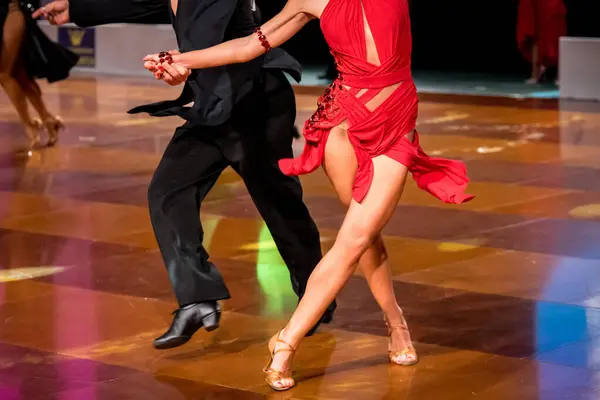Table of Contents
People of all ages and skill levels can enjoy ballroom dancing. It is often taught in dance studios, community centers, and schools, where individuals can learn the techniques, steps, and styles specific to each dance style.
Participating in ballroom dancing provides opportunities for physical exercise, artistic expression, social interaction, and personal growth, making it a popular and rewarding activity for many people.
Ballroom dancing not only provides physical exercise but also offers numerous emotional and psychological benefits. Let’s look in depth at what ballroom dancing is before looking into the emotional benefits of ballroom dancing.
What is Ballroom Dancing?
Ballroom dancing is a partner dance form performed socially and competently. It is characterized by graceful and coordinated movements between two individuals, typically a leader (often male) and a follower (often female), who move together harmoniously to various types of music. Ballroom dancing is known for its elegance, precision, and expressive nature.
Several dance styles fall under the umbrella of ballroom dancing, including:
- Standard/Smooth Dances: These dances focus on smooth and flowing movements and are performed in closed dance positions. They include the waltz, tango, foxtrot, Viennese waltz, and quickstep.
- Latin/Rhythm Dances: Latin dances are energetic, passionate, and often characterized by rhythmic hip movements. They include the cha-cha-cha, rumba, samba, paso doble, and jive.
- Social/Street Latin Dances: These dances are often associated with social settings and clubs, and they have influences from Latin American and Caribbean dance styles. Popular social Latin dances include salsa, bachata, merengue, and mambo.
- Other Styles: Besides the standard and Latin dances, various other styles may be considered ballroom dancing, including the Argentine tango, swing (e.g., East Coast swing, West Coast swing), and various folk and cultural dances adapted for ballroom settings.
7 Emotional Benefits Of Ballroom Dancing
Here are some of the emotional benefits of ballroom dancing:
1. Stress reduction
One of the significant emotional benefits of ballroom dancing is stress reduction. Engaging in ballroom dancing can help reduce stress levels.
The combination of physical activity, rhythmic movements, and music can promote relaxation, release tension, and stimulate the production of endorphins, which are natural mood-boosting chemicals in the brain.
2. Improved mood and mental well-being
Dancing can enhance mood and overall mental well-being, particularly in a social setting.
Positive social interactions, connection with dance partners, and the enjoyment of music can contribute to feelings of happiness, joy, and a sense of belonging.
3. Increased self-confidence
Learning and mastering dance steps and routines can boost self-confidence. As dancers improve their skills and feel more comfortable on the dance floor, they develop greater self-assurance and accomplishment.
This newfound confidence can extend beyond the dance floor and positively impact various aspects of life.
4. Enhanced body image
Ballroom dancing encourages body awareness and body positivity. It emphasizes graceful movement, posture, and coordination, which can improve body posture, alignment, and overall physical presence.
Regular participation in dance can help individuals develop a positive body image and feel more comfortable and confident in their skin.
5. Social connection and relationships
Ballroom dancing is often a social activity that brings people together. Engaging in dance classes or social dance events provides opportunities to meet new people, make friends, and build social connections.
The supportive and collaborative nature of partner dancing fosters teamwork and cooperation, leading to meaningful relationships.
6. Increased mental agility and memory
Learning and remembering dance routines, steps, and patterns can stimulate cognitive functions. Ballroom dancing requires mental focus, coordination, and memory recall, which can improve mental agility, concentration, and memory skills over time.
7. Creative expression and emotional release
Dancing allows for creative expression and emotional release. Through movement and interpretation of music, dancers can express their emotions, channel their energy, and experience a cathartic release. This can be particularly beneficial for individuals seeking an outlet to express themselves and manage their emotions.
Conclusion
Ballroom dancing can provide a holistic experience that benefits the body and mind, offering emotional well-being, self-confidence, social connections, and a joyful means of self-expression. Hence, you can reap these emotional benefits of ballroom dancing by actively engaging in it. So why not consider it?





More Stories
Ashwagandha’s Impact on Cortisol Levels in Stressed People
Health care cyberattack ‘likely one of the worst,’ expert says
Accessing Medicinal Cannabis in the UK: A Comprehensive Guide